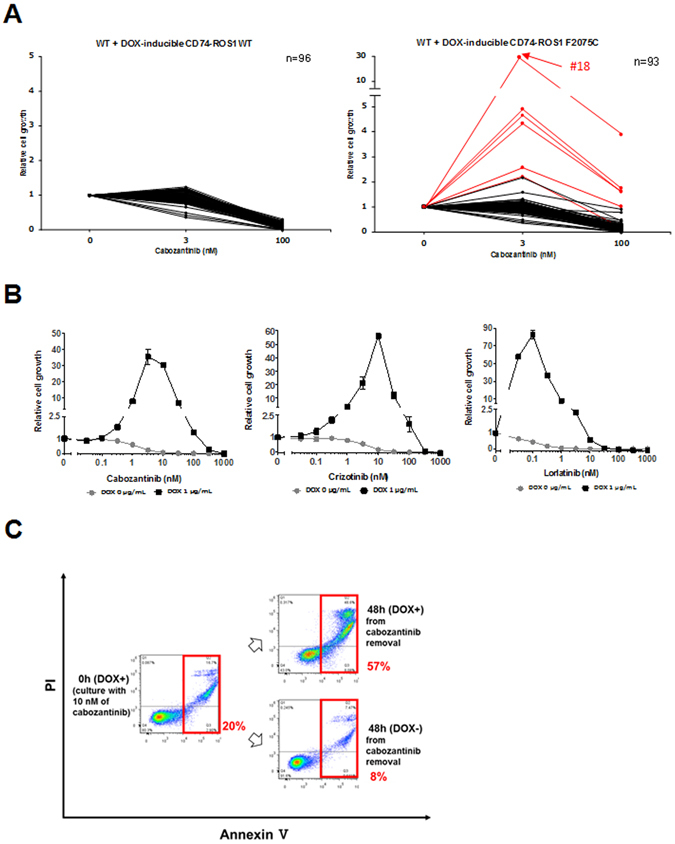Figure 4.

Reconstructed Ba/F3 cells conditionally over-expressing F2075C-mutated CD74-ROS1 show characteristics of ROS1-TKI addiction. (A) Viability of wild-type CD74-ROS1 cell clones expressing doxycycline (DOX)-inducible CD74-ROS1 wild-type (left) or F2075C (right). Each clone was untreated (0) or treated with 3 or 10 nM cabozantinib in addition to 1 μg/mL of DOX for 72 hours, and cell viability was measured with the CellTiter-Glo assay. Each value is shown as relative cell growth by normalizing with the value of untreated wells. The top 6 clones with enhanced proliferation under treatment with 3 nM of cabozantinib compared with untreated cells are shown in red. (B) Sensitivity to cabozantinib (left), crizotinib (middle) or lorlatinib (right) of wild-type CD74-ROS1 cells expressing DOX-inducible CD74-ROS1 F2075C, clone #18 (reconstructed F2075C). Each reconstructed F2075C cell line with or without 1 μg/mL of DOX was treated with the indicated dose range of inhibitors for 72 h, then cell viability was measured by the CellTiter-Glo assay. Each value is shown as relative cell growth by normalizing to the value of untreated wells. (C) Apoptosis assay by flow cytometry for reconstructed F2075C cells incubated with 10 nM cabozantinib and 1 μg/mL DOX for 7 d, then removal of cabozantinib in the presence or absence of 1 μg/mL DOX for 48 h. The percentage of cells undergoing apoptosis is shown in red.
